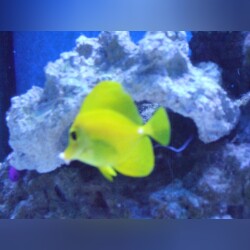Info
Turbinaria reniformis Bernard, 1896
Color: Usually yellow-green with distinctly coloured margins.
Habitat: May form large stands on fringing reefs where the water is turbid.
Abundance: Sometimes common.
Similar Species: Turbinaria mesenterina.
Synonymised names
Turbinaria disparata Nemenzo, 1979 · unaccepted > junior subjective synonym (?)
Turbinaria lichenoides Bernard, 1896 · unaccepted > junior subjective synonym (?)
Turbinaria reptans Bernard, 1896 · unaccepted > junior subjective synonym (?)
Turbinaria veluta Bernard, 1896 · unaccepted > junior subjective synonym (?)
Color: Usually yellow-green with distinctly coloured margins.
Habitat: May form large stands on fringing reefs where the water is turbid.
Abundance: Sometimes common.
Similar Species: Turbinaria mesenterina.
Synonymised names
Turbinaria disparata Nemenzo, 1979 · unaccepted > junior subjective synonym (?)
Turbinaria lichenoides Bernard, 1896 · unaccepted > junior subjective synonym (?)
Turbinaria reptans Bernard, 1896 · unaccepted > junior subjective synonym (?)
Turbinaria veluta Bernard, 1896 · unaccepted > junior subjective synonym (?)







 muppet54321
muppet54321
























